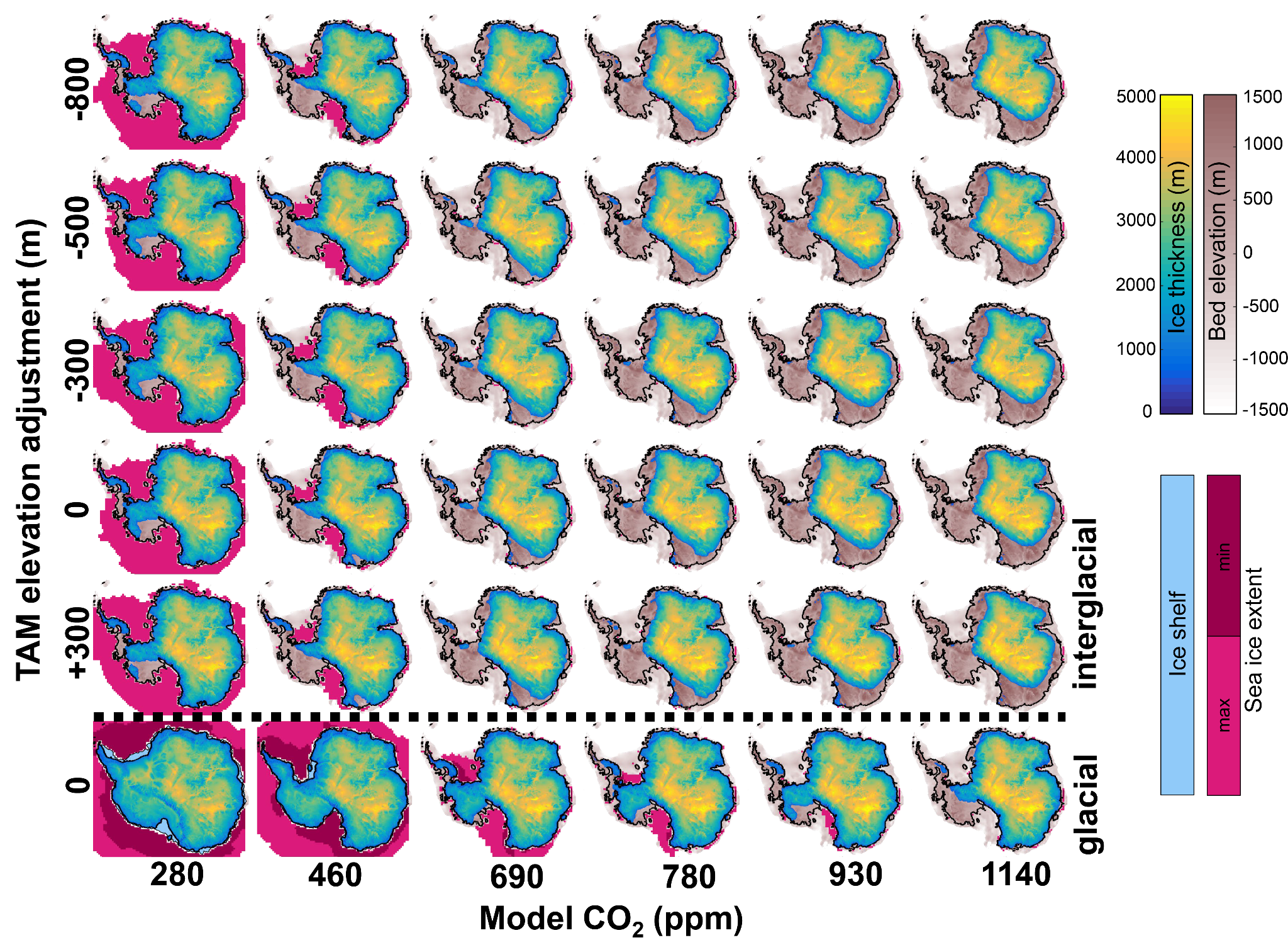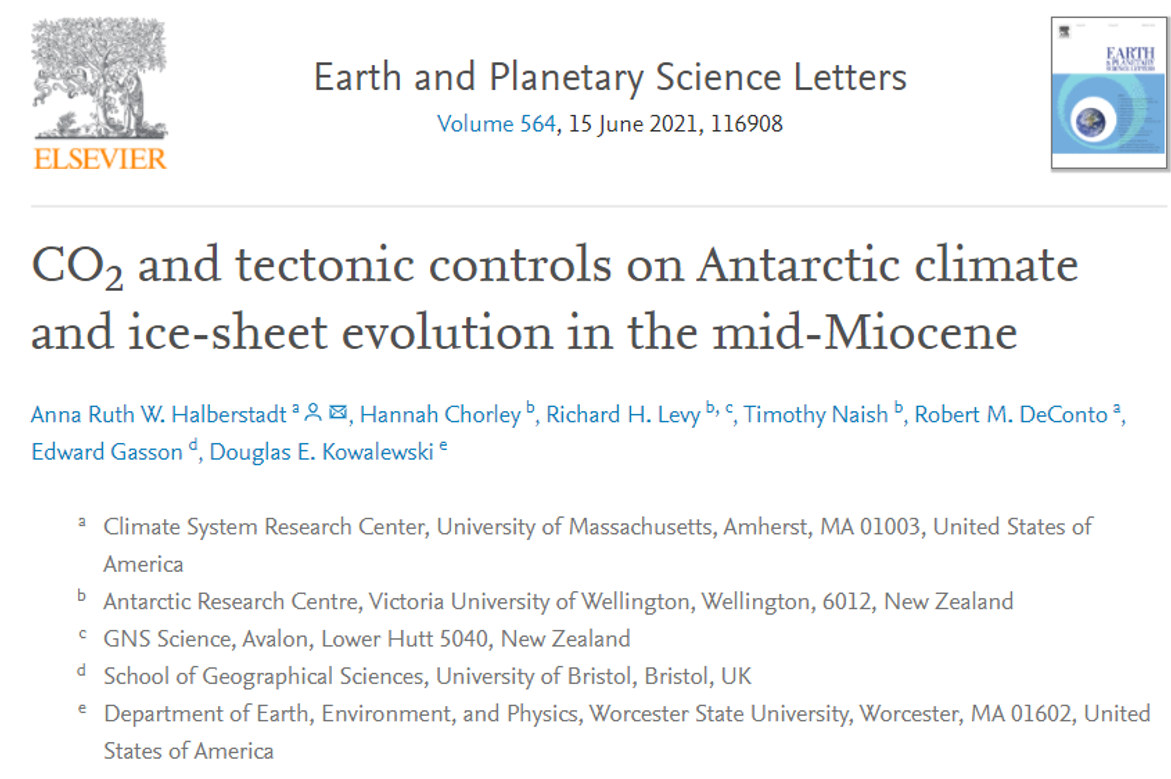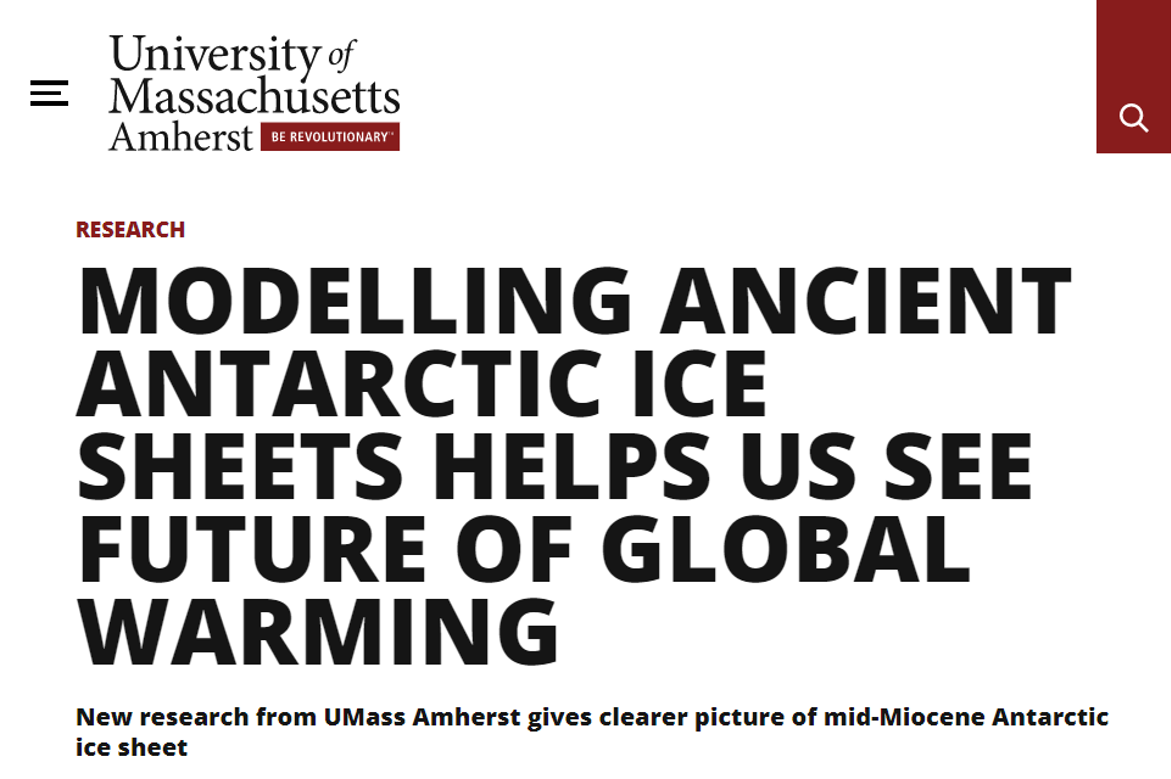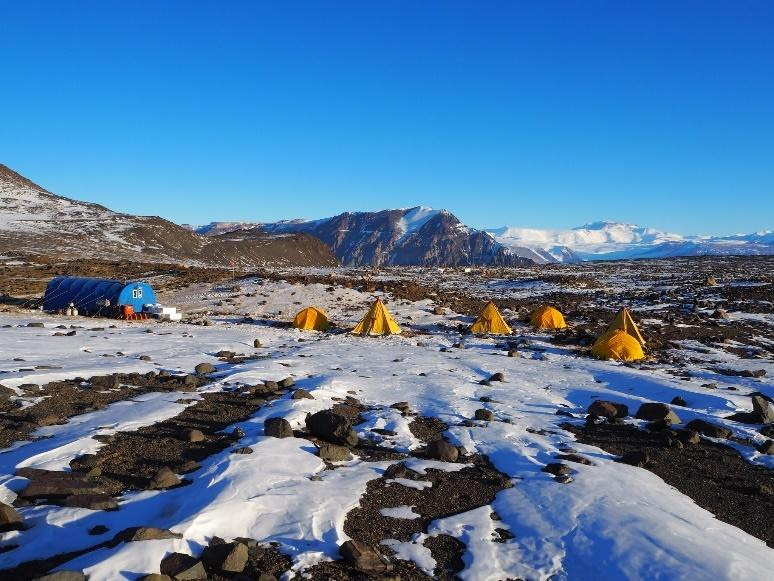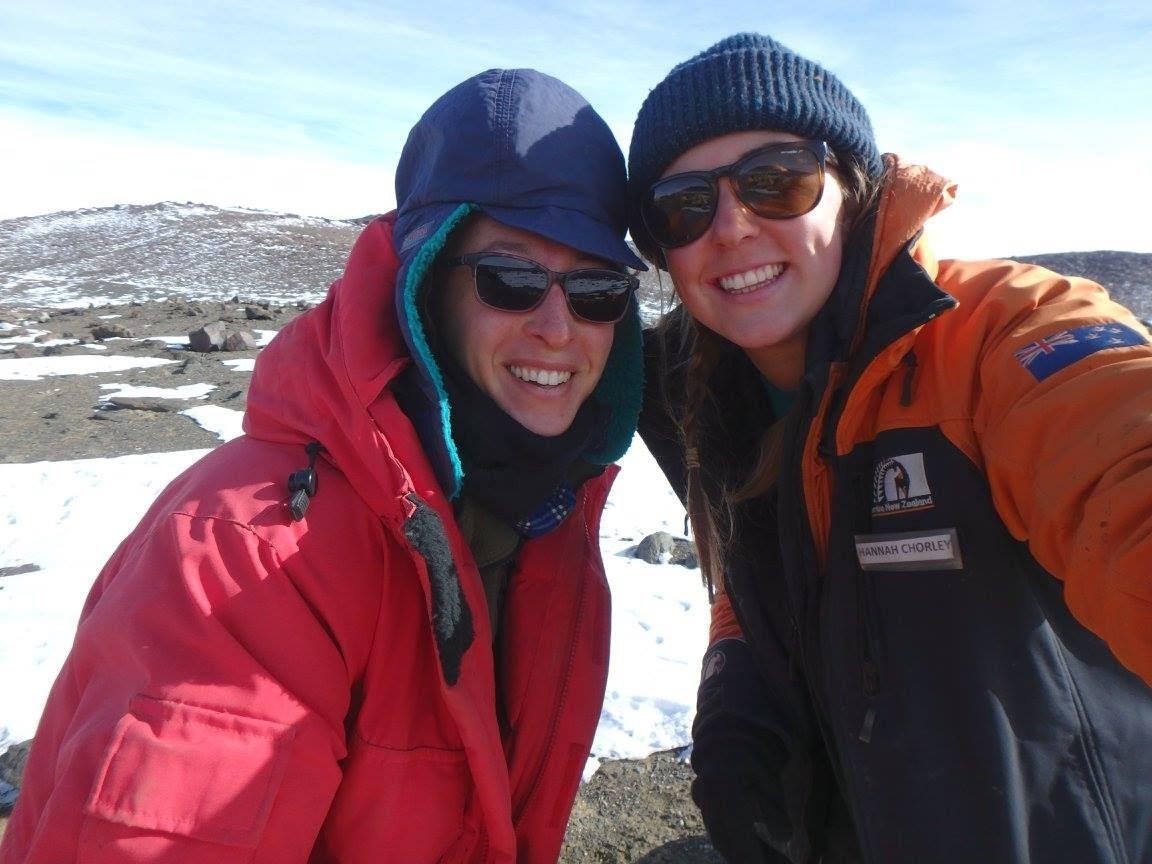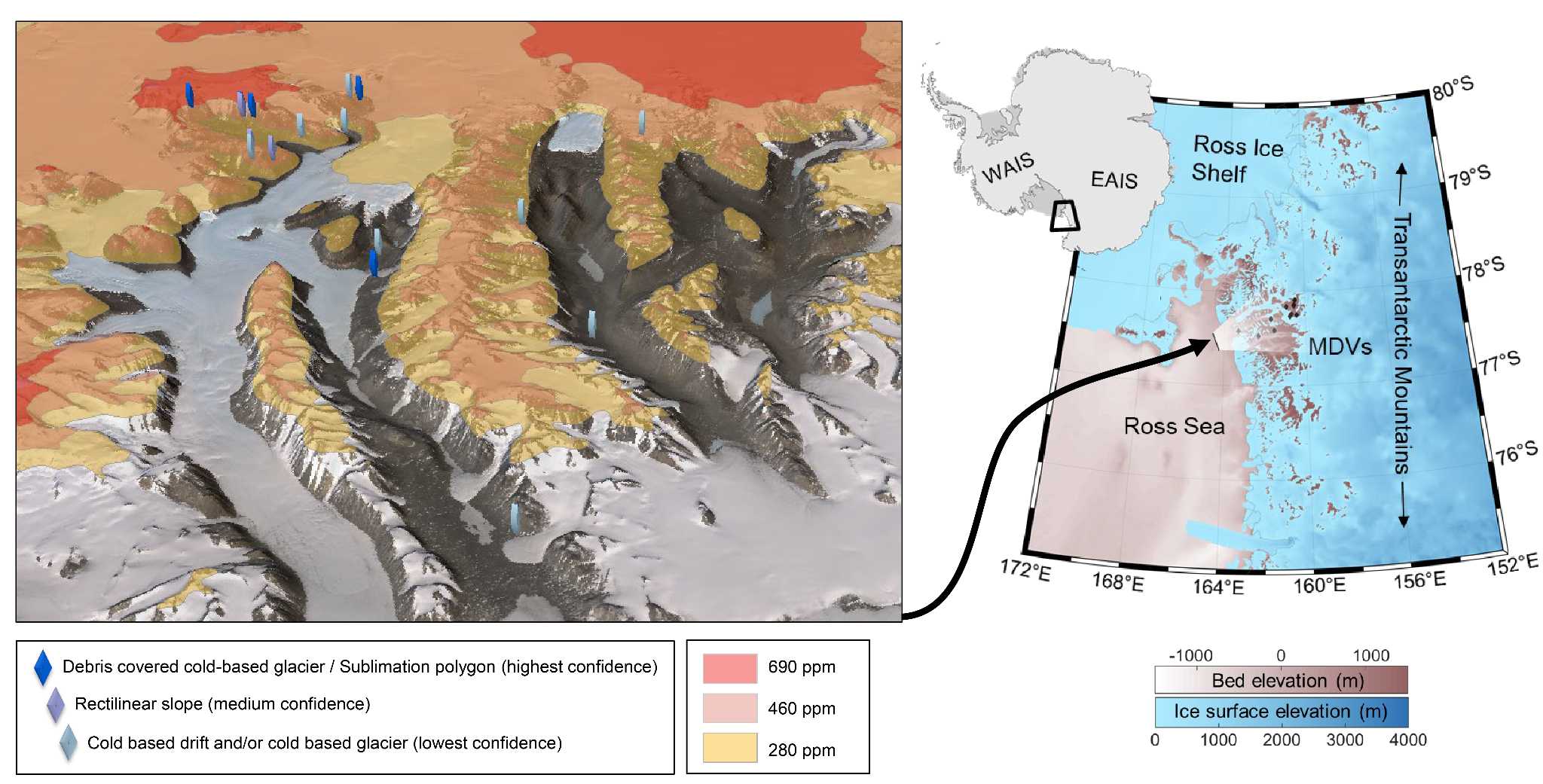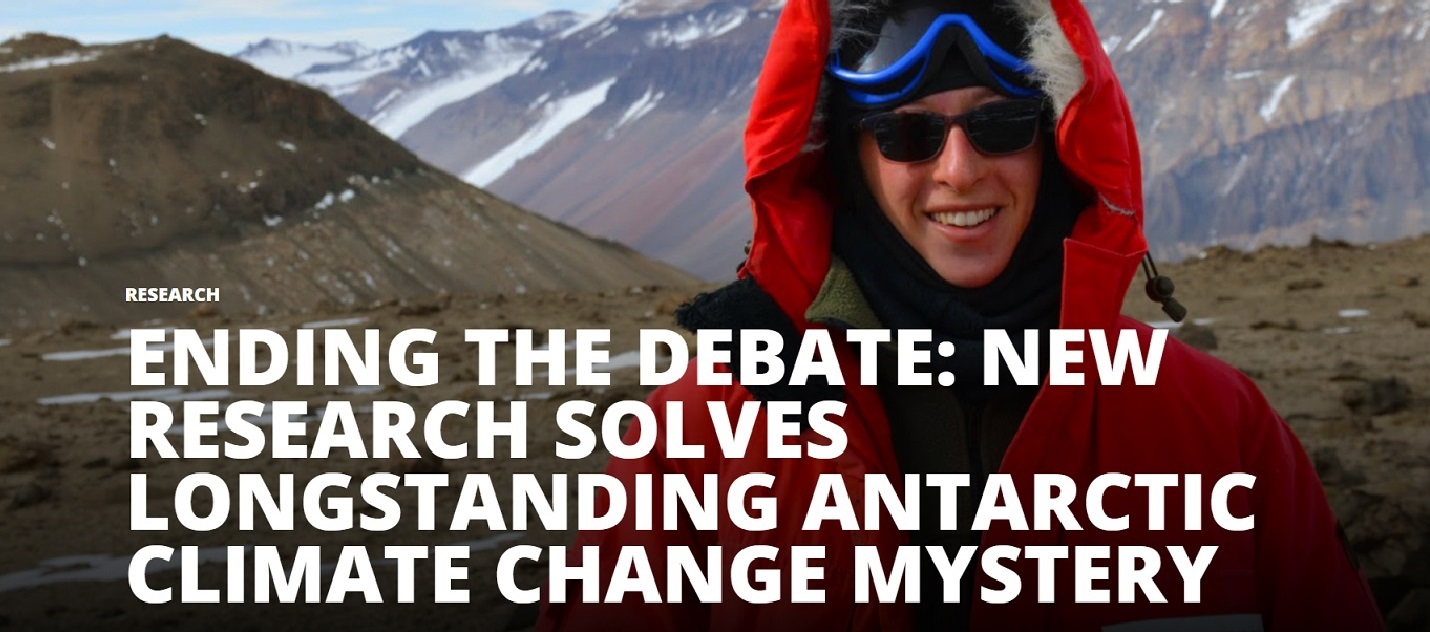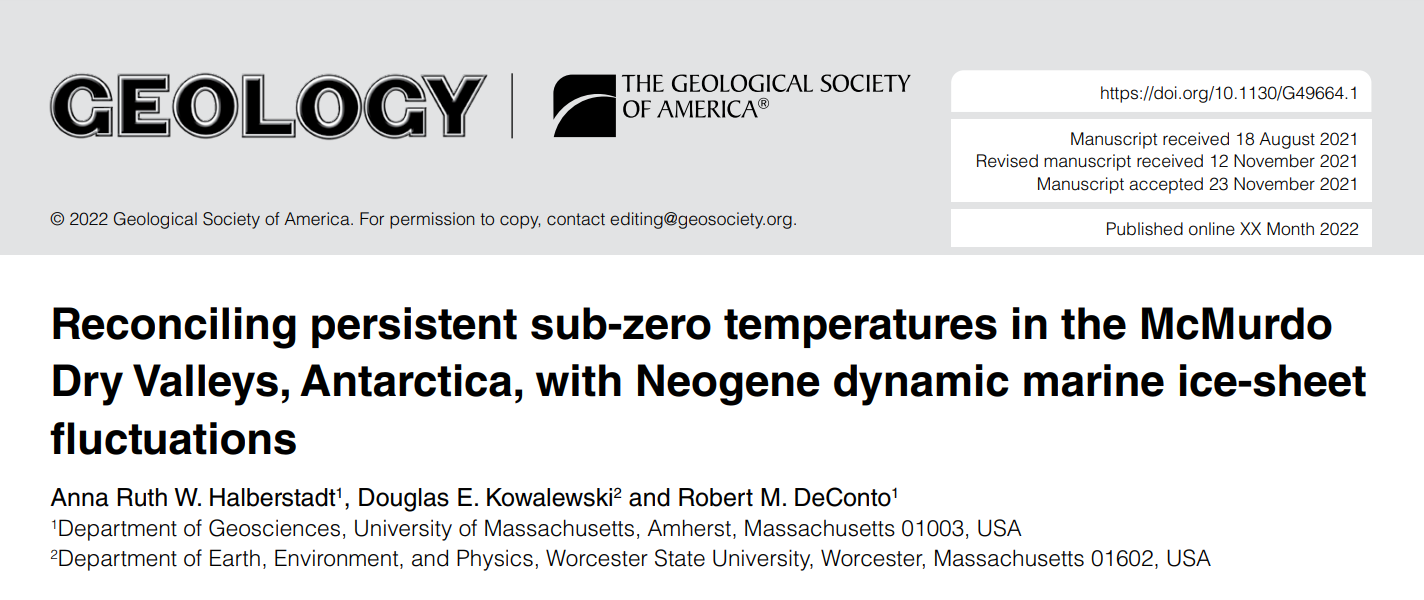Antarctica during past warm periods
During the last 250 years, atmospheric CO2 concentrations have risen well above preindustrial levels (~280 ppm) and exceeded even the highest interglacial CO2 levels of the last few hundred thousand (!) years. Because we are rapidly shifting to a climate state that is historically unprecedented, past warm periods are crucial analogs to understand the global environmental changes that are occurring now and in the future. To find a past period that might resemble future conditions, is therefore necessary to look back in time millions of years. Studying these past warm periods in ‘deep time’ improves our estimates of the rate and amount of global sea level rise we project for the coming century. My research reconstructs past ice sheet extent and contributions to global sea level during these past warm periods.
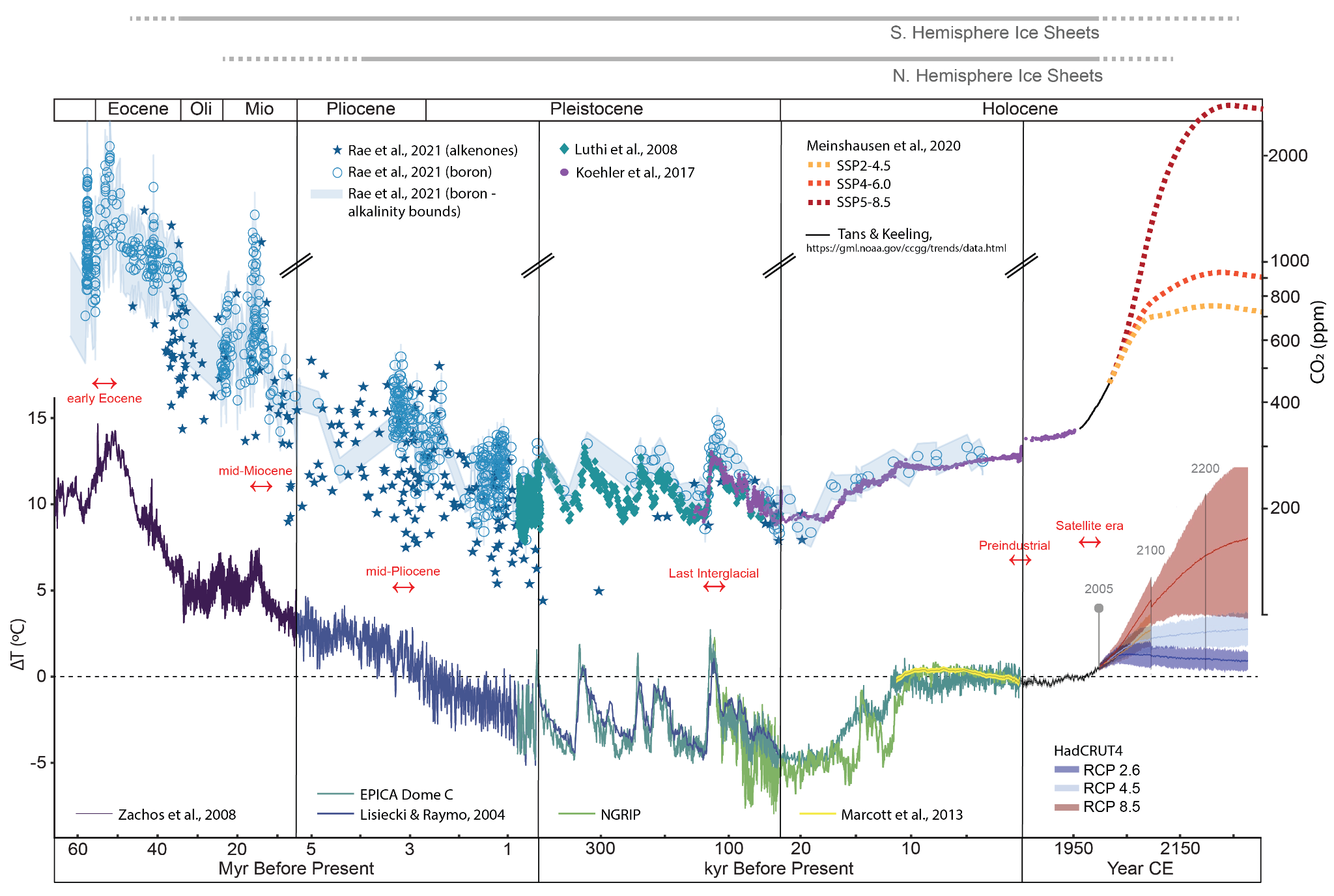
Atmospheric CO2 concentrations and surface temperature anomalies reconstructed for the past 60 million years and into the future (modified from Burke et al., 2018)
